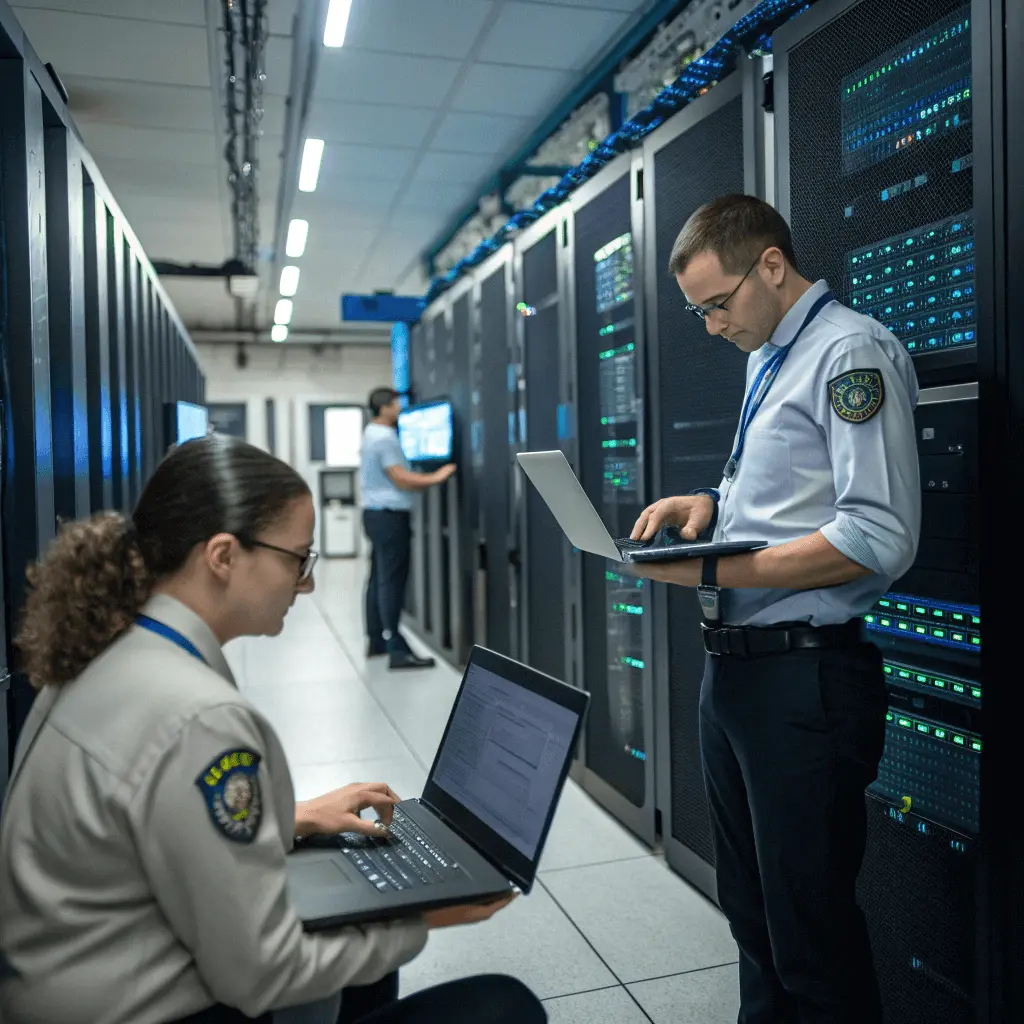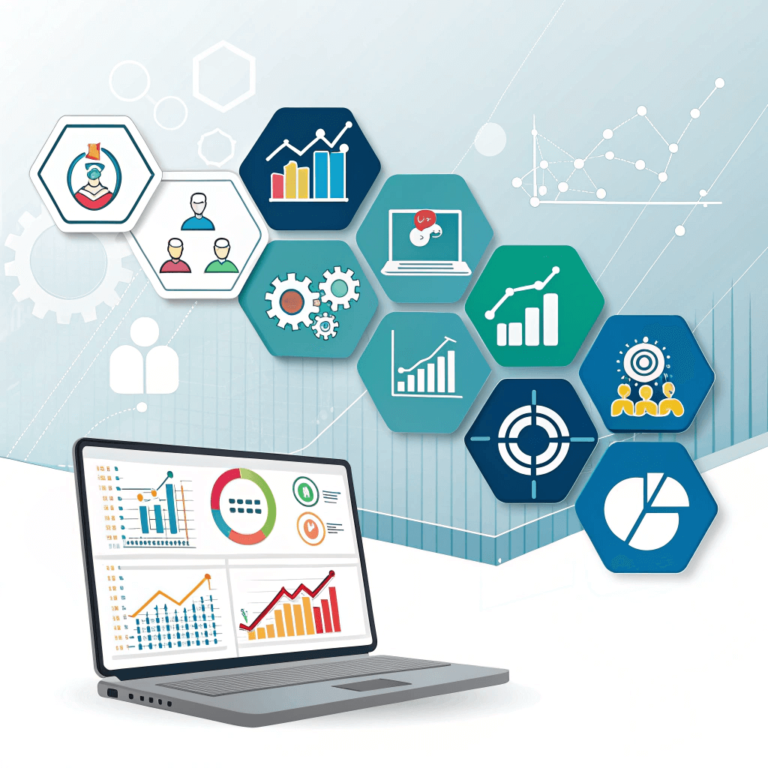
In the rapidly changing business landscape, security is paramount for all organizations. As businesses increasingly depend on digital tools and technologies, the threats from both cyber and physical security risks are escalating. If not properly managed, these risks can result in substantial financial setbacks, harm to reputation, and a breakdown of customer trust.
To protect your assets and operations, it is essential to implement comprehensive security strategies that address both digital and physical vulnerabilities. In this article, we will explore how businesses can mitigate security risks and safeguard their operations through effective security measures.
Identifying Common Security Risks
Before businesses can effectively address security risks, they must first understand the range of threats they face. Security risks can manifest both digitally and physically, each carrying its own set of challenges. Digital risks, such as cyberattacks and data breaches, are increasingly common, with businesses becoming targets for hackers, ransomware attacks, and phishing schemes. These threats compromise sensitive data, causing significant financial and reputational damage.
Physical security risks, including unauthorized access, theft, and vandalism, pose a significant threat to physical assets. Moreover, insider threats, negligence, and human error are major risk factors within organizations. Small businesses, often underestimating their vulnerability, are particularly susceptible to cyberattacks due to inadequate defenses. As businesses expand, their risk profile escalates, necessitating comprehensive security strategies that encompass both digital and physical threats.
Implementing Cybersecurity Measures
Given the prominence of digital threats, businesses must prioritize cybersecurity to protect sensitive information. Effective cybersecurity involves several essential measures. One of the most fundamental practices is encryption. Encrypting sensitive data ensures that even if cybercriminals gain access to your systems, they will not be able to read the information without the correct decryption key. Data protection through encryption is critical for maintaining customer confidentiality, particularly in sectors that handle personal or financial information. Using VPNs is also another way to keep data secure, as they keep your data encrypted while on the internet.
Another key measure is implementing firewalls and antivirus software. These tools block unauthorized access to your network and protect against malicious software, such as malware, viruses, and ransomware. Regular updates and patching of software are also crucial in preventing cybercriminals from exploiting known vulnerabilities.
Multi-factor authentication (MFA) is another critical security measure. MFA provides an additional layer of protection by requiring users to verify their identity through multiple steps, such as a password and a unique code sent to their phone. This extra step ensures that even if an employee’s password is compromised, unauthorized users cannot access critical systems without the second authentication factor.
Employee education also plays a key role in cybersecurity. Businesses should provide ongoing training for staff on how to recognize phishing attempts, securely handle sensitive information, and follow best practices for data protection. By creating a culture of security awareness, businesses can significantly reduce the risk of human error leading to a breach.
Strengthening Physical Security
While digital security is crucial, physical security also needs to be a priority for businesses. A strong physical security system helps protect assets such as inventory, office equipment, and sensitive documents. Start by implementing access controls. These measures limit access to sensitive areas to authorized personnel only, ensuring that unauthorized individuals cannot gain access to valuable or confidential resources. For example, key cards, biometric scanners, or security badges can help restrict entry to specific parts of your premises.
Another important step in enhancing physical security is the installation of surveillance systems. CCTV cameras and motion detectors provide constant monitoring of your premises, deterring criminal activity and enabling real-time threat detection. These systems also serve as evidence in case of theft or vandalism, helping law enforcement track and apprehend suspects.
Maintaining physical storage security is crucial. Safeguarding valuable documents, devices, and equipment in secure, locked environments is essential. Employing safes, locked cabinets, or designated secure storage areas for sensitive materials helps protect your business’s physical assets. For businesses handling a large volume of confidential records, collaborating with specialists in commercial storage solutions for off-site storage can significantly bolster security. Secure offsite storage guarantees that critical records are safe from theft or damage and remain readily accessible.
Securing Your Supply Chain and Third-Party Vendors
Businesses increasingly rely on third-party vendors for essential goods and services. However, this dependence exposes the company to security risks, as vendors often have access to sensitive data or systems. If a third-party vendor has inadequate security protocols, it can become a weak link in the chain that cybercriminals exploit.
To mitigate these risks, businesses should conduct regular security assessments of their suppliers, partners, and contractors. This ensures that their security measures align with the company’s standards. Additionally, businesses should require vendors to sign contracts that outline their cybersecurity responsibilities, ensuring they maintain robust security practices.
To protect your business and data, regularly audit vendor systems for vulnerabilities and ensure third-party vendors comply with industry standards and regulations. Building strong relationships with trusted vendors and prioritizing security in contract negotiations are also crucial steps.
Continuously Monitoring and Evaluating Security
Mitigating security risks is not a one-time task – it is an ongoing process. Regularly monitoring your business’s security systems and updating protocols is essential for staying ahead of emerging threats. One of the most effective ways to maintain strong security is by conducting regular security audits. These audits can identify weaknesses in both your digital and physical security systems, allowing you to take corrective action before any breach occurs.
In addition to audits, continuous monitoring tools provide real-time visibility into your network and premises. For example, businesses can use monitoring systems to detect unauthorized access attempts or suspicious network activity, enabling immediate action to prevent damage. Integrating AI-powered security tools can further enhance your security posture by identifying patterns of suspicious activity and triggering alerts when a potential threat is detected.
To stay ahead of the ever-evolving threat landscape, businesses must also stay informed about the latest security trends and technologies. Regular updates to your security software and tools ensure that your organization remains prepared for new types of cyberattacks. It’s also important to foster a culture of continuous improvement, where employees are encouraged to report security concerns and participate in training programs to stay updated on best practices.
Conclusion
Mitigating security risks is crucial for protecting the future of any business. By implementing effective cybersecurity measures, strengthening physical security, securing the supply chain, and continuously monitoring and evaluating security, businesses can significantly reduce their exposure to potential threats.
Businesses can enhance operational efficiency and further protect critical data by implementing strategies like off-site storage for sensitive records. A proactive approach to security enables businesses to mitigate risks, safeguard valuable assets, and prosper in both digital and physical environments.






